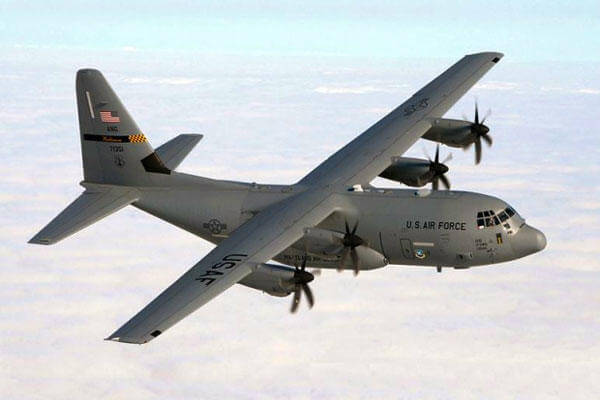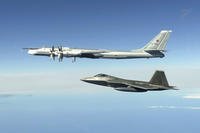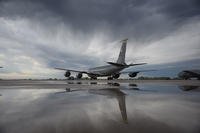Air Force officials told lawmakers Tuesday that the service is giving priority to its mobility aircraft as it funds upgrades necessary so that the planes can fly over U.S. airspace in accordance with new Federal Aviation Administration mandates going into effect in 2020.
Under the new rules, all aircraft, including military, must be equipped with the Automatic Dependent Surveillance-Broadcast system, which continually broadcasts an aircraft's position, identity and velocity over an unencrypted data system to render the most accurate picture for air traffic management. Military aircraft will be able to alter their identifiers when necessary for security reasons.
Because mobility platforms -- transports including C-130s, C-17s and tankers -- more often fly in the densest airspace, they will get the upgrades first.
First up will be the Air Force's C-130 Hercules aircraft, for which $9.8 million was included in the Fiscal 2016 budget. But not even all of the C-130s will have them by the FAA's deadline.
Rep. Randy Forbes, R-Virginia, chairman of the Subcommittee on Seapower and Projections Forces, told Air Force officials on Tuesday he is concerned that the 2017 defense budget fails to provide the funding needed to make sure the service's fleet has the FAA's NextGen system in place in all aircraft by Jan. 1, 2020.
"I am concerned that our military aircraft could be shut out of the airspace they need for transit and training," he said.
The Army and Navy both have been budgeting for the upgrades to their aircraft, he said.
Lt. Gen. Mike Holmes, Air Force deputy chief of staff for strategic plans and requirements, told lawmakers the Air Force has lost about $40 billion in buying power since the 2012 defense budget was enacted, and so the service has had to look for places to trim costs.
"The total bill to equip all [Defense Department] aircraft is about $5.6 billion," he said. "The Air Force's portion of that is approximately $4.4 billion -- the lion's share of that bill -- and right now [there is] about $1.2 billion difference in between what we need to accomplish the mandate and what we have committed in our budget."
He conceded that the Air Force will not have all aircraft installed with the NextGen capability by the deadline, but said the Air Force would likely get through all of its C-130s.
"For some of our aircraft, there may not be a cost-affordable solution to implement it," he said. The F-22 may be one of these. "But DoD made clear when the FAA passed the rules that we'd need some kind of accommodation."
There is no specific DoD waiver, but the rules do include procedures for aircraft not equipped with the new system to obtain authorization to operate in the airspace, he said.
"We'll be able to operate. We'll be able to go where the nation needs us to go," he said.
According to the figures released last month, the Air Force is budgeting just over $5 million in 2017, nearly $8 million in 2018 and about $10.8 million in 2019.
Holmes said the Air Force expects to upgrade its entire fleet incrementally, with all of them meeting FAA requirements by 2028.
-- Bryant Jordan can be reached at bryant.jordan@military.com. Follow him on Twitter at @bryantjordan.
Related video:
US Air Force Pilots | 5 Things You Don't Know





























